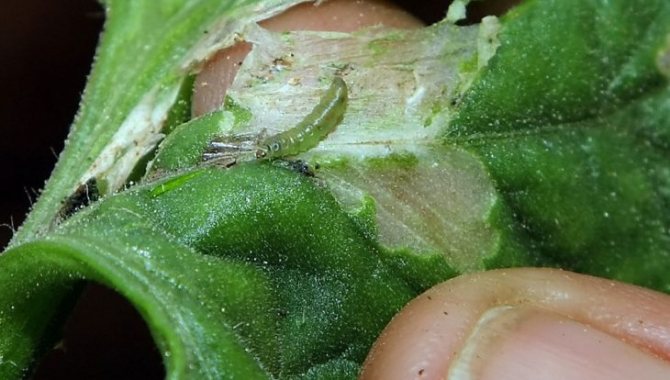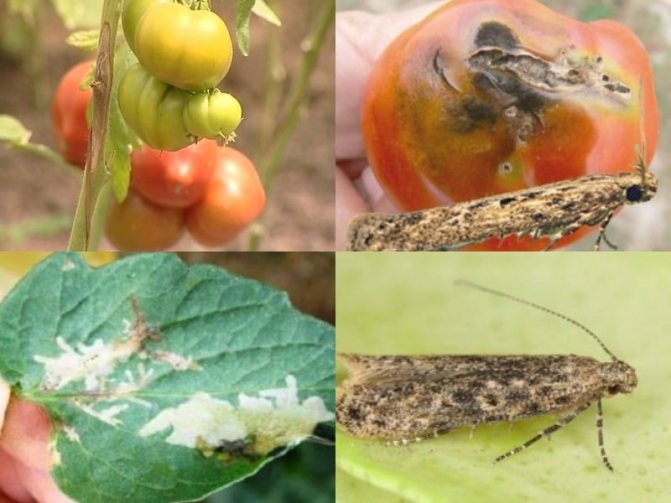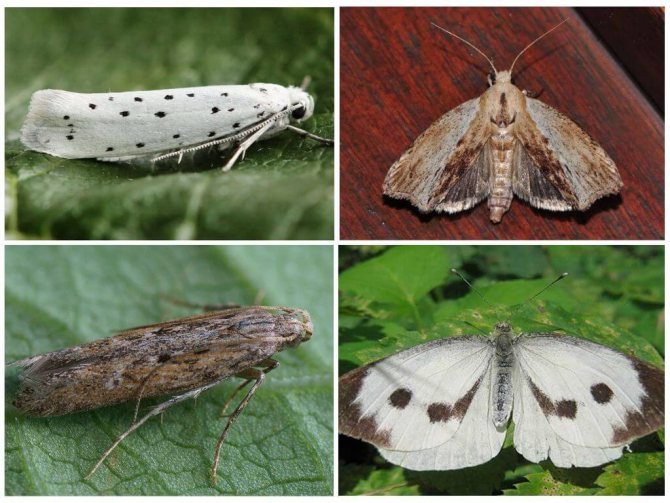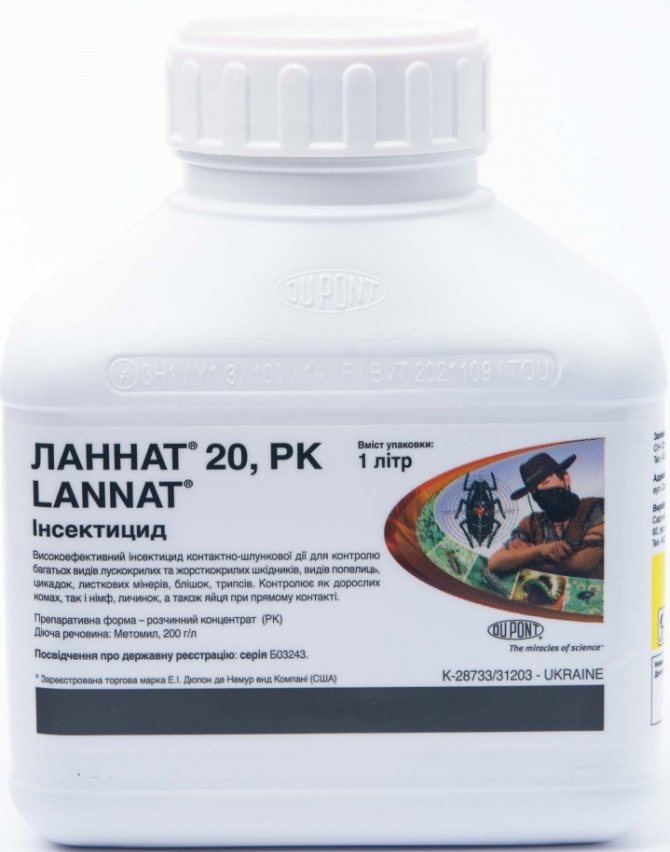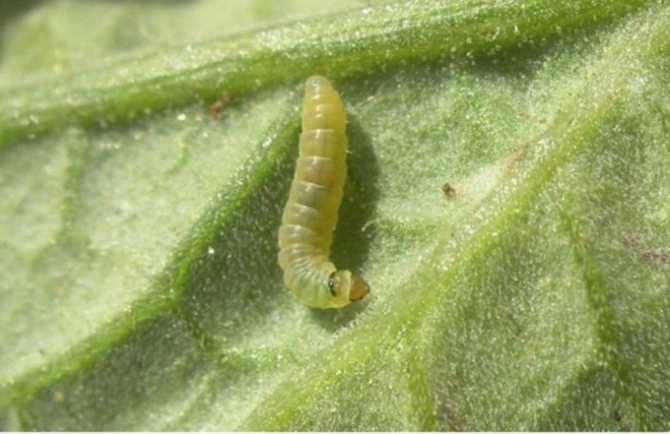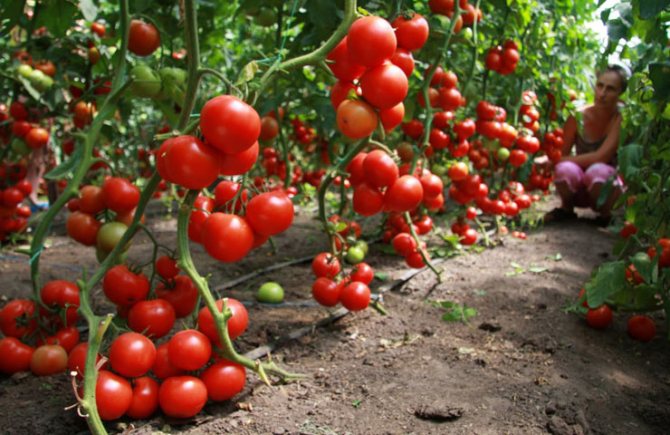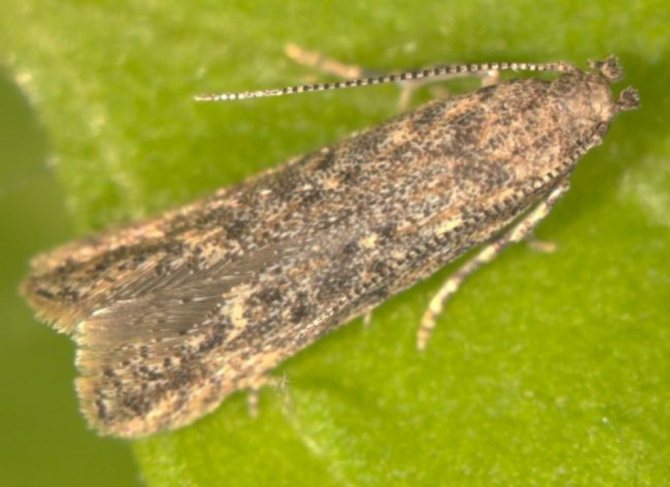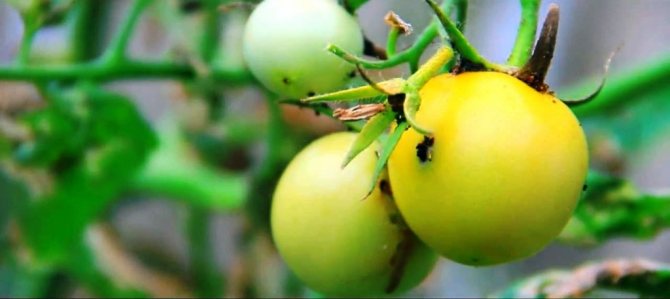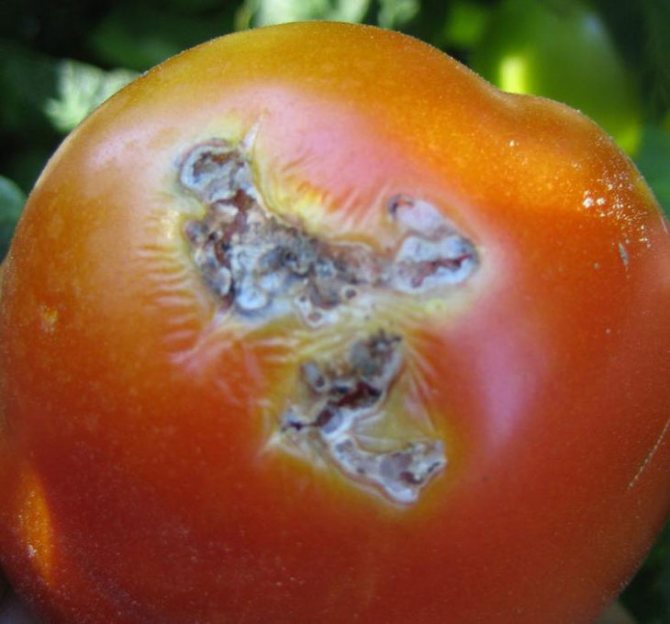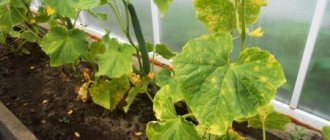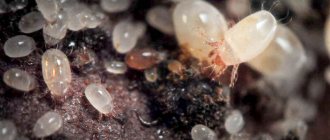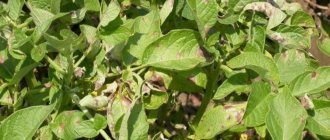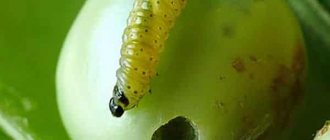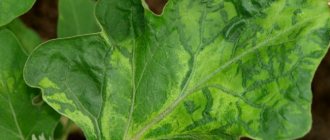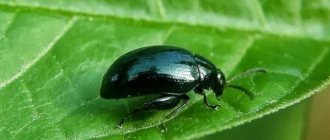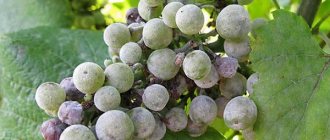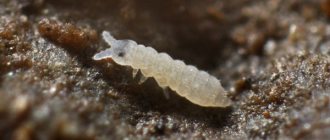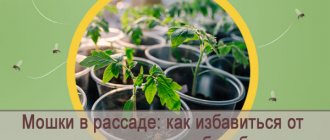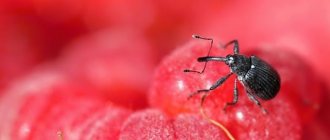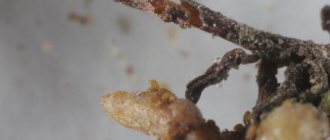Tuta absolute is an agricultural pest that infects plants of the Solanaceae family. The main food source of this insect is tomatoes, hence the name "tomato moth". It is especially dangerous because it gets used to various types of insecticides, which significantly reduces their effectiveness, and also because of its exceptional voracity and adaptability to adverse environmental conditions.
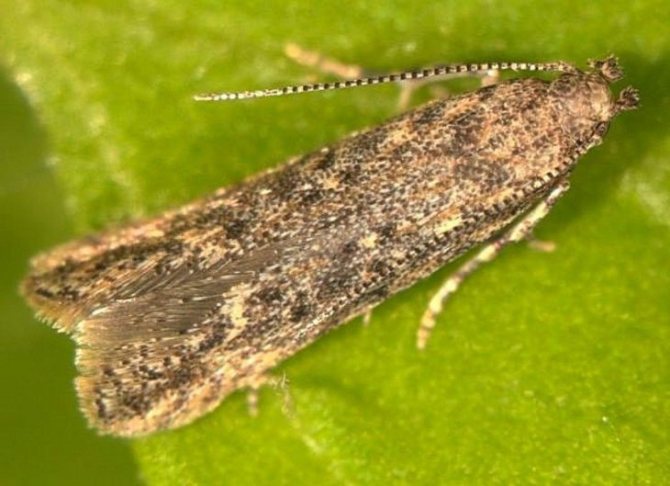
Geographic distribution
The tomato mining moth is a common pest in Central America, which in the second half of the 20th century spread to the entire South American continent and the countries of Southern Europe. The tomato moth has been recorded in Bolivia, Brazil, Chile, Colombia, Ecuador, Paraguay, Uruguay and Venezuela, thus it can be argued that the insect develops successfully in regions located at an altitude of less than 1000 m above sea level.
In Europe, the moth first appeared in Spain, in 2006, where it is currently the primary pest of tomatoes. It is necessary to take into account the fact that these countries are currently considered the main suppliers of export tomatoes, including Turkey, from where tomatoes are brought to us. Algeria and Morocco, which also regularly supply this vegetable to Russia, reported outbreaks of tomato moth in 2008.
Tuta absoluta also actively breeds in Italy, France and Tunisia. All European "records" of this insect, to date, are registered precisely on tomato crops, without signs of damage to other plants.
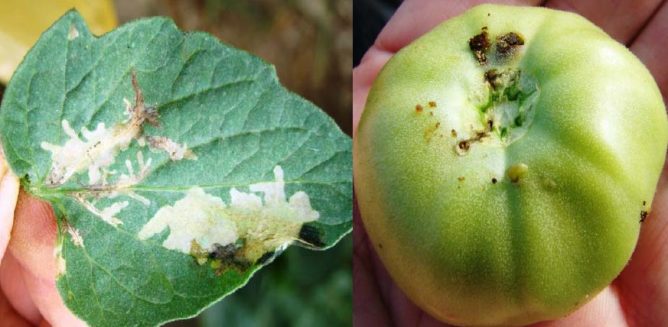

On the territory of the Russian Federation, the tomato moth was first discovered in 2008, when examining exported products from the countries of South America and Turkey. As a settled pest, the insect was found in the Krasnodar Territory in 2010. By the end of 2011, tomato moth larvae were found everywhere by farmers in the Republic of Adygea, Dagestan and Bashkiria, both in the open field and in closed greenhouses. Among the countries of the near abroad, Belarus, Ukraine and Lithuania are in the high-risk zone.
Tomato disease late blight and plant treatment
Disease of tomatoes late blight in the photo
One of the most dangerous fungal diseases of tomatoes is late blight, or brown rot of fruits. First, brown spots appear on the leaves and stems of tomato, around which a characteristic pale green zone is formed, and on the underside of the leaves in wet weather - white moldy mycelium.
As you can see in the photo, dark brown stripes are formed on tomatoes with this disease (on the leaf stalks and stems), and on the fruits - brown subcutaneous spots, quickly covering the entire surface:
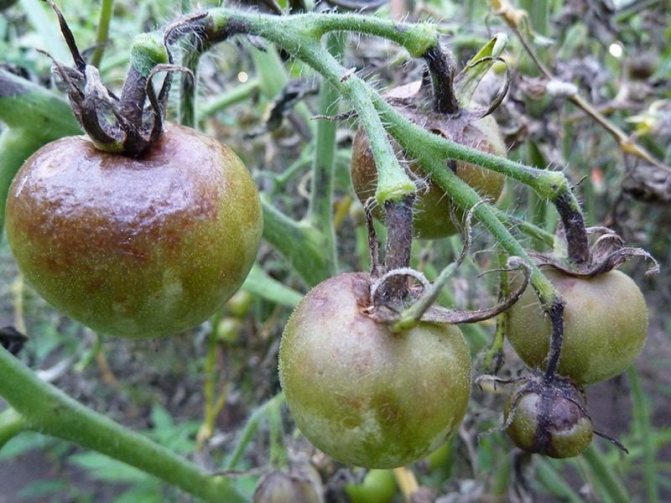

Late blight on leaf stalks and stems in the photo
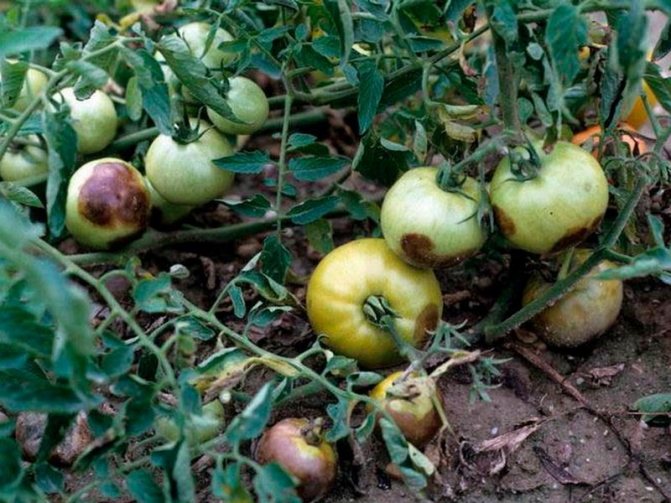

Late blight of fruits in the photo
The leaves dry up in dry weather, and in wet weather they rot, the fruits soften and become unsuitable for consumption. In wet weather, a white bloom appears on the fruit. Mostly green fruits are affected.
On tomatoes affected by this disease in the open field, fungal spores are formed, which are transferred to healthy plants by wind, rain and irrigation water. The intensity of the development of the disease depends on the weather conditions. In dry weather, the development of late blight stops.
The causative agent of the disease is preserved in the form of spores on plant residues in the soil, in the skin and hairs of tomato seeds.
This disease is especially dangerous for tomatoes grown in greenhouses. If the temperature and humidity conditions are not observed, it can cause the death of plants in a few days. Indoors, the disease manifests itself most strongly at a relative air humidity above 80% and an average daily temperature of + 17 ... + 22 ° С with a decrease at night to + 10 ° С.
How to deal with this tomato disease in the greenhouse and open field? Given the nature of the appearance and development of late blight, crop rotation plays a special role in the fight against it.
To protect tomatoes from this disease, it is impossible to grow tomatoes in the same garden from year to year, just as potatoes should not be planted next to this crop. The best precursors for nightshades (tomatoes, potatoes, peppers, eggplants) are cabbage, legumes, cucumbers and green crops - dill, lettuce, parsley, onions, spinach.
Tomato seeds must be thoroughly disinfected before sowing, and in the fall, the tops of plants should be removed and destroyed no less carefully. In the summer, it is necessary to carry out additional fertilizing of plants with potash fertilizers, weed the beds, water and loosen the soil, mulch the plants in the rows.
The first preventive spraying with fungicides is justified already in May, 3-5 days after planting seedlings in the ground. The best drug for the treatment of tomatoes from this disease is "Profit Gold", which exhibits a systemic effect with an interval between treatments of 10-12 days. From contact pesticides, spraying with 1% Bordeaux mixture, "Abiga-Peak", is possible, but with an interval of 5-7 days.
Do not water the plants with overhead irrigation. The last spraying with fungicides is permissible no later than 15-20 days before harvest.
To reduce the harmfulness of late blight, the fruits must be removed brown, before the onset of full marketable maturity, especially if the air temperature drops to +10 C at night.
Fruits taken from plants that have signs of the disease, especially in autumn, before laying for ripening should be dipped for 1-2 minutes in water heated to +60 C. Then let them dry and ripen at a temperature of +25 C.
The development of late blight in tomatoes is facilitated by increased air humidity, abundant dew, fogs, sudden temperature fluctuations, thickened plantings.
After harvesting, all parts of plants damaged by late blight are necessarily burned. In no case should they be composted.
An excess of nitrogen fertilizers leads to a more intensive development of a number of diseases, including late blight.
The nature of the damage
As with other insect pests of the large family of moths, damage to human activity occurs due to the activity of the larvae. Adult tomato moth butterflies are not dangerous for tomato production. The larvae, actively feeding, literally drill the leaves and fruits, thereby producing vast and deep tunnels, causing significant losses in the yield of protected and open ground.
About how the aerial part of the plants looks after the activity of the tomato moth - the photo will tell you along the way.
A characteristic feature of this insect species is the feeding of the larvae with mesophilic leaf tissues and, as a consequence, the formation of irregularly shaped "mines" on its surface. Therefore, the South American tomato moth is often called the tomato miner moth. As a result, after the activity of the pest, tomato leaves begin to resemble a translucent gauze tissue, while maintaining their shape. The volume of such damage can reach 100%, and throughout the entire cycle of growing tomatoes.
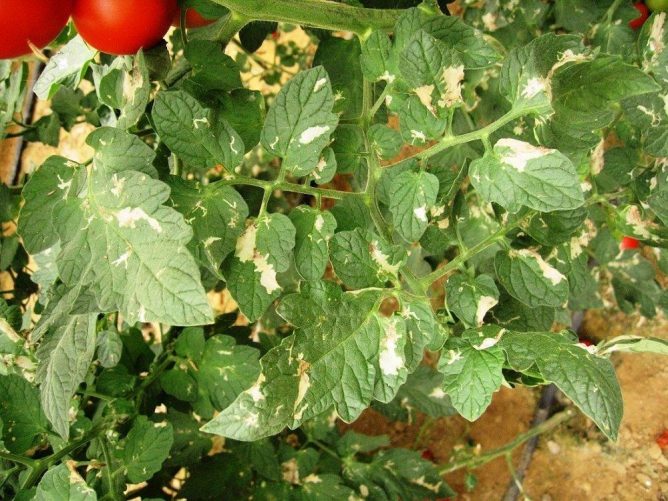

It should be noted that Tuta absoluta is characterized by a fairly high reproductive capacity.One butterfly can produce up to 10-12 generations per year, under favorable conditions. In addition, larvae are extremely unlikely to enter a state of diapause as long as a food source is available.
Other characteristics of the pest's vital activity include the following:
- The moth can overwinter at any stage of its life cycle - eggs, pupae or adults. Although for those regions where this species of insects lives, the concept of "overwinter" is rather conditional, it would be more accurate to put it - to wait out the absence of tomato bushes.
- An adult female can lay hundreds of eggs over the entire time of her life, and given the rapid maturation of the offspring, a butterfly alone can bring thousands of small worms during the season, which actively eat tomato crops.
- Tomato bushes can be attacked at any stage of their growth, from seedlings to mature plants. The main thing is that there is a green mass of leaves.
- The moth attacks the apical buds of the plant, leaves, stems, flowers and fruits. In a word, the entire above-ground part of the culture, which then, among other things, is strewn with a large amount of black dried excrement.
As noted above, the wrecking of tomato moth contributes to a decrease in the yield and quality of tomatoes grown in a greenhouse or in the open field. During mass attacks of the pest, tomato fruits lose their commercial value, and such losses can amount to 50-100% of the entire cultivated area.
Since the larvae are pests that often feed on the inside of the fetus, it is difficult to achieve effective control with the use of chemical insecticides. In addition, the butterfly's organism is able to quickly develop resistance to various kinds of chemistry, therefore, as a rule, after 1-2 years, populations with reduced sensitivity to insecticides, which were previously effective, appear.
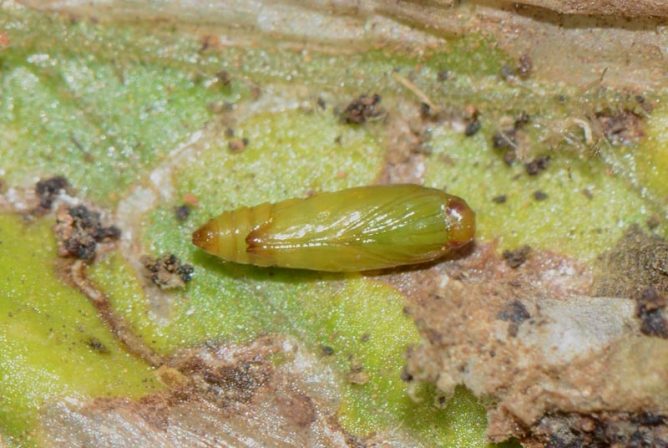

What are the main characteristics
Throughout her life, the female is capable of laying hundreds of eggs. The larva of the parasite is yellow. The size of a young individual does not exceed 0.5 mm. A greenish tint gradually appears.
An adult grows up to 9 mm. The back has a pink tint. Pupation occurs. Pupa of light brown color. The size is 6 mm.
Males are darker than females. In the presence of favorable conditions, the insect creates 10-13 new generations per year. The representative is able to hibernate at any stage of the life cycle. The breeding process directly depends on the external conditions and place of residence.
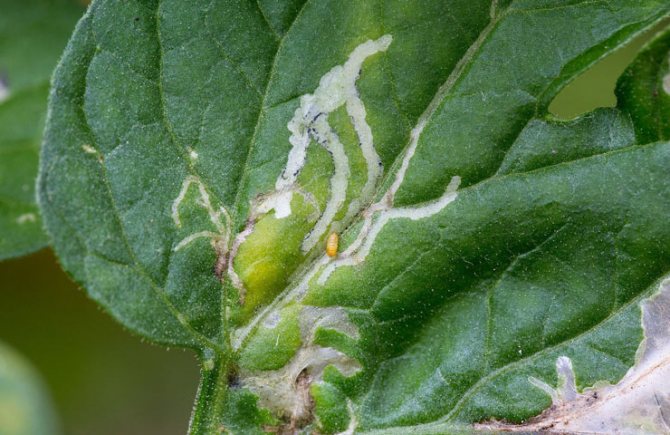

Larvae can cause serious damage to horticultural crops
Brief developmental biology
Tuta absoluta is a pest with a high reproductive potential. In addition to the fact that a butterfly can give about 10-12 generations a year, in each of which up to 300 eggs are laid, the insect's full biological cycle ends in just 30-35 days.
Adults are predominantly nocturnal and hide between leaves during the day. Their body size is about 5-7 mm, with a wingspan of 8-10 mm in adult females. Tomato moth eggs are small, cylindrical, from creamy white to yellow, poorly visible to the naked eye - 0.35 mm. Hatching occurs 4-6 days after the ovipositor has been carried.
The larvae are cream-colored with a characteristic distinction in the form of a dark head. In the process of growth, this stage of the insect's life goes through four stages of maturation. If there is food, the larvae never enter a state of diapause. This sign further complicates the fight against the pest. Pupation can occur in the soil, on the surface of leaves, or in tunnels made in fruits.
The most important identifying features of an adult butterfly are the filamentous antennae of a silvery-grayish color and the characteristic black spots on the forewings. The larvae, in the process of maturation, change their color, which makes it possible to predict the time of pupation.In the early stages of growth, they are transparent green and then turn light pink. The larval period is the most destructive for tomatoes, which ends in 12-15 days.
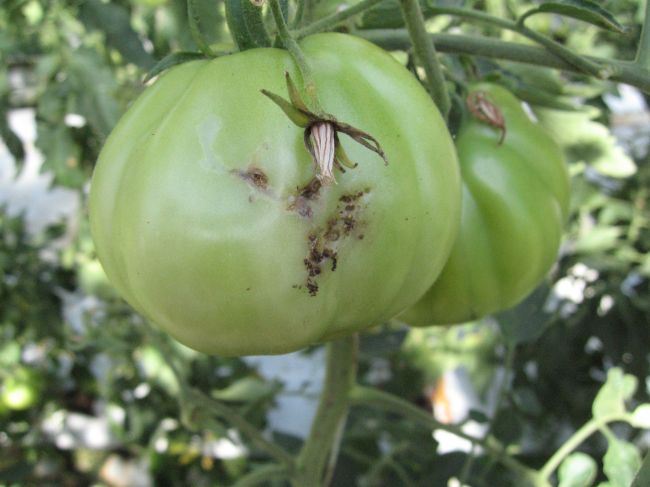

Reproduction
The moment when moths lay eggs is easy to track - mass swarming begins around the trunks of trees and plants. The moth lays about fifty small eggs of a milky green color.
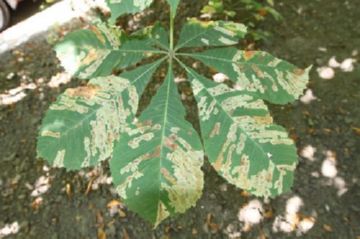

The larvae hatching after a few days do not come to the surface, but immediately bite into the surface of the leaf. The larva is completely closed from the world, since the egg shell closes the entrance to the mine.
During the entire development period, the larva goes through several stages:
- the first three stages, the larva gains the mass necessary for growth, feeding exclusively on the sap of the plant and starting laying the course;
- from the fourth stage, the larva transforms into a caterpillar and begins to eat the fiber of the leaf, expanding the passages;
- the sixth phase of development is notable in that the caterpillars stop eating and begin to spin silk for their cocoon.
It should be noted that caterpillars can also settle in old, abandoned cocoons.
Larvae and caterpillars do not hibernate; this is only available to pupae, which can easily endure frost in their cocoon. The hatched moth comes to the surface at the moment the plants begin to bloom.
Tomato moth: control measures
As already noted, the fight against tomato moth presents certain difficulties. In countries where this pest is one of the first places in the plans for the development of control measures, the method of pheromone traps is actively used. Using this method, they learned to monitor and catch pests, concentrating them in one place for the convenience of subsequent physical destruction.
Traps based on the pheromone Qlure-TUA are ideal for mass capture of pests, especially in conditions of growing tomatoes in greenhouses.
This approach helps to significantly reduce the pest population in greenhouses, especially if fine mesh nets are additionally used at the entrance. Mass capture of butterflies involves placing a large number of traps in various strategic positions to remove a large enough number of male insects from the pest population.
The pheromone method is widely used in combination with other control methods to achieve acceptable levels of damage and reduce dependence on insecticidal treatments.
Due to the small spread of tomato moth in tomato growing conditions in the Russian regions, pheromone traps are an exceptional method that is practically not available to a wide range of consumers.
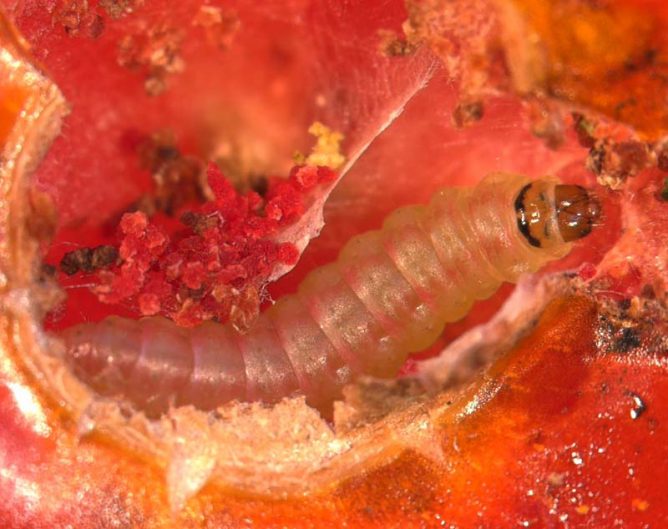

How to deal with tomato diseases in a greenhouse: rot treatment (with photo)
Tomatoes also affect various types of rot: apical, white, brown (phomosis), root rot (anthracnose), gray (botrytis).
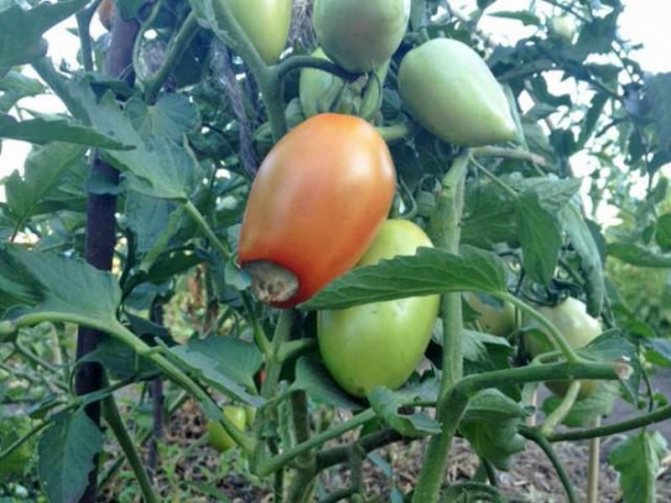

Top rot of tomatoes in the photo
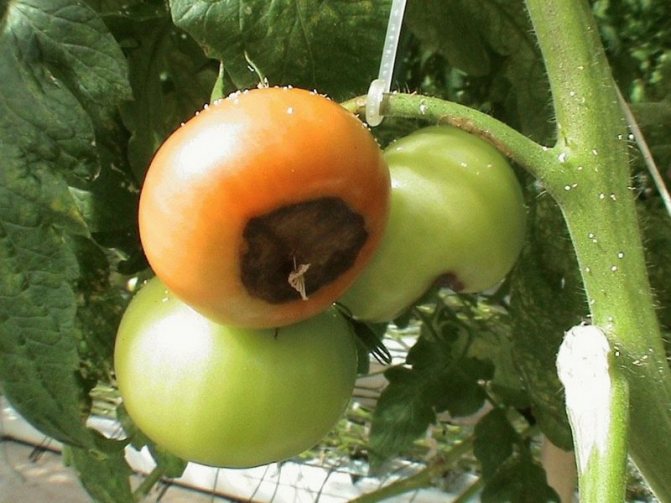

Diseases of tomatoes in the photo
Top rot of tomatoes is a physiological (non-infectious) disease that affects fruits in open and closed ground. In the garden, it appears more often in years with dry summers and on light sandy soils with a lack of moisture. Affected green or ripening fruits, mainly the first two to three brushes.
A watery spot appears at the top of the fruit, which is somewhat darker than healthy tissue. The spot grows, quickly darkens, is pressed in and hardens, the top of the fruit becomes flat, acquires zonal folding. Affected fruits turn red quickly.
One of the main reasons for the appearance of top rot is the irregular provision of plants with moisture, especially at the very beginning of fruiting, as well as a lack of calcium and an excess of magnesium in the soil.


White rot of tomatoes in the photo
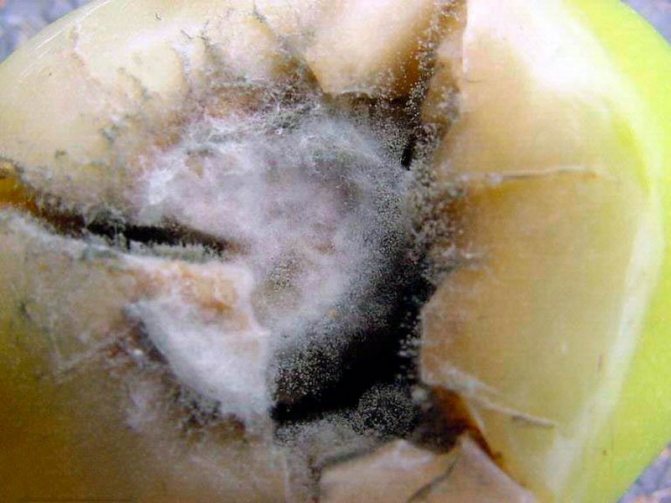

Fungal disease of tomatoes in the photo
White rot is a fungal disease common in greenhouses.The disease suddenly appears if it is cold in the greenhouses during the rooting of the transplanted plants. Typical signs of white rot are wilting of the top of the plant and rotting of the lower part of the stem. The root part of the stem softens and becomes covered with a white flocculent bloom. On the cut of the stem, large black sclerotia of the fungus are visible. Sometimes they also form on the surface of the stem. Typically, white rot appears as foci and causes a small number of plants to fall out. Infected fruits become soft, watery.
Tomatoes in greenhouses are especially prone to white rot when other types of vegetables are grown next to them.
How to deal with this tomato disease in the greenhouse and in the open field? Control measures, in addition to maintaining an optimal temperature and humidity regime, include the destruction of diseased plants and fruits, observance of fruit change in greenhouses.
Bacterial rot is wet and develops on ripening fruits that lie on the ground for a long time.
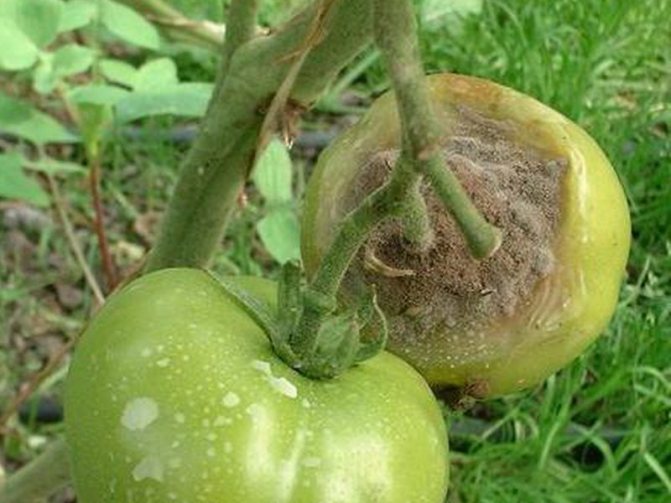

Brown rot of tomatoes in the photo
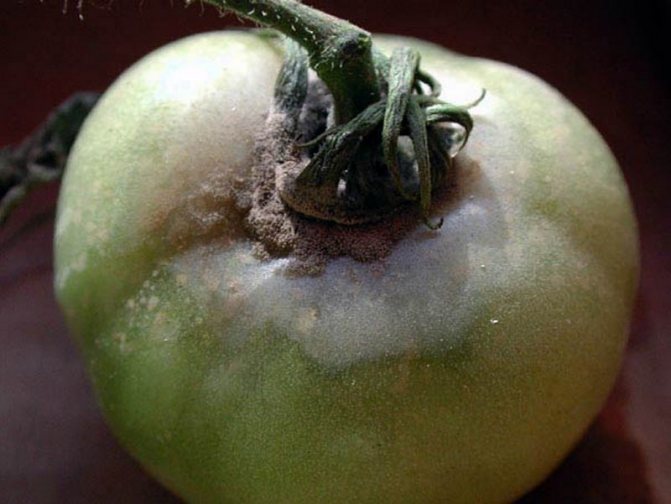

Brown rot affects mainly green fruits
Brown rot is also a fungal disease, affecting mainly green and ripe fruits at the base in the form of a brown spot. Diseased fruits come off the stalk and fall off.
Gray rot affects tomatoes at the end of the growing season, if the weather is cool and cloudy. Watery spots on green or ripening fruits merge, turn white and rot, often become covered with gray mold.
With root rot, the root collar decays and, as a result, the entire plant withers. The fungus-causative agent of the disease enters the plant through mechanical damage to the roots. This rot spreads especially quickly if the seedlings are planted in cold soil.
These photos show tomato diseases and plant treatment methods:
Tomato anthracnose Botrytis tomato
Biological methods
The tomato moth has a lot of its predators, the use of which in the fight against the pest brings a certain share of success. However, as in the case of pheromones, this method of struggle is little used in our country, at least for now. Below is a list of actively used living organisms, for which the tomato moth larvae are the main source of nutrition or maintenance of their kind. More information about these living organisms can be found in additional sources:
- Trichogramma pretiosum.
- Trichogramma achaeae.
- Macrolophus tais.
- Nesidiocoris tenuis.
- Nabis pseudoferus
It is worth noting that the activity of the trichogramma fly shows the greatest efficiency in the biological fight against tomato moth - the effect of destroying the pest reaches 91.74%.
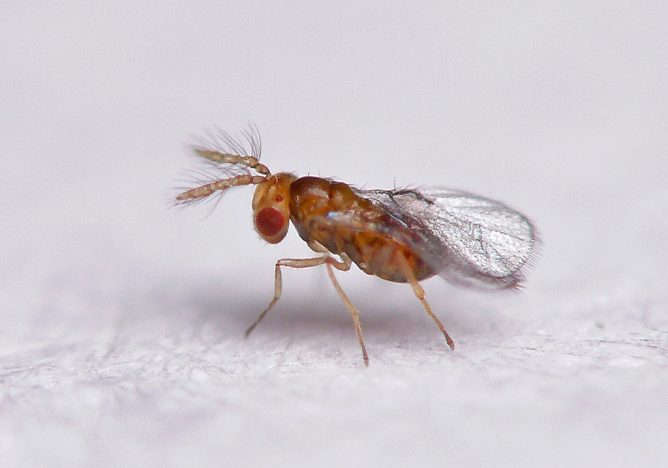

Microbial control with Bacillus thuringiensis has shown satisfactory efficacy against infestation by tomato mining moth in countries where this pest is most prevalent. In addition, the entomopathogenic fungus Metarhizium anisopliae can cause 37.14% mortality in female moths. Cases of Beauveria bassiana can result in 68% larval mortality.
Of the plant insecticides, neem seed extract, containing azadiractin, which acts as a contact and systemic insecticide against tomato moths, shows a good effect. When treating the soil with a composition containing neem oil, a 50-100% larval mortality was recorded. The same result is obtained by applying oil on the surface of tomato leaves. But the treatment with the solution of the larvae themselves shows comparatively lower results.
Fungal and viral diseases of tomatoes
Another common fungal disease of tomatoes is macrosporiosis. On the leaves (at the beginning of the lower ones), rounded or irregularly shaped brown spots with a diameter of up to 1 cm appear, with clearly expressed concentric circles on them. The spots gradually merge, the heavily affected leaves dry out.
Under favorable conditions, the disease quickly spreads to the upper leaves, sometimes to the petioles and stems. Fruits are infected from the leaves. At the sites of their attachment to the peduncle, a brown, depressed concentric spot appears. The surface of the stain is covered with a black velvety coating. Diseased plants form a small amount
Strick of tomatoes in the photo
Tomato streak is a viral disease.It manifests itself in the form of brown necrotic stripes on the stems, petioles and stalks and irregularly shaped brown spots on the leaves. Brown, angular spots appear on the peel of green fruits, and twisting ribbons of corky tissue appear on ripening ones. Often the drying of diseased plants begins from the top of the plant. The intensive development of the streak is facilitated by sharp changes in day and night temperatures.
The disease spreads mechanically during plant care, and is carried by sucking pests.
From the measures to combat this disease of tomatoes, thermal disinfection of seeds is used; destruction of diseased plants; application of mineral fertilizers in optimal proportions; when pinching, disinfection of rubber gloves and working tools with a solution of potassium permanganate; control of aphids and whiteflies.
Rolling tomato leaves in the photo
In hot years in the southern region, curling of tomato leaves is widespread. This is a physiological disease that develops under the influence of unfavorable conditions - poor development of the root system, delayed removal of stepchildren, excessive dry air, lack of phosphorus nutrition.
In infected plants, the leaves curl upside down along the midrib, often in the form of a tube. Fruit yield drops sharply. It is known that plants grown from seeds that are obtained from diseased plants also sometimes develop a large number of twisted leaves.
Leaf rolling in the southern zone is mainly observed in tall tomato varieties.
To protect against diseases, spraying with drugs is carried out prophylactically, that is, before the onset of the disease, or when its first signs are detected.
Chemical fight
Frequent intensive use of insecticides leads to the development of insect resistance to the effects of insecticides. In particular, already in the second year of use, resistance to the pyrethroid group of drugs appears, for example, to methamidophos and kartap. However, there are also long-term active ingredients that have proven to be effective against the larval infestation of the tomato moth.
These include - imidacloprid, indoxacarb, spinosad and deltamethrin. However, it must be remembered that the use of such a series of agents is limited to the use only on tomato leaves, since their accumulation in the tunnels made by larvae in fruits can harm human health.
Insect pests of tomatoes in the greenhouse and soil: photos and control measures
Insect pests threaten tomatoes both in the open field and in greenhouses.
Tomato pest: Colorado potato beetle larva Tomato pest: Colorado potato beetle
The most dangerous is the Colorado potato beetle. Everyone knows him, a lot has been written about him. The most effective preparations for protecting tomatoes from this pest are: "Bison", "Tanrek", "Iskra Zolotaya", "Confidor" and "Commander", "Apache", etc. All these pesticides are long-acting (up to three weeks). To control pests of tomatoes, it is important to thoroughly sprinkle in the evening during the mass hatching of larvae.
Whitefly pests also cause damage to tomatoes in the open field and in the greenhouse. The same toxic chemicals, as well as Aktara and Aktellik, will save the plants from these insects.
In the southern region, tomatoes of medium and late ripening periods are often affected by the polyphagous caterpillars of the scoop.
Look at the photo - these pests of tomatoes, gnawing inside, eat away the seeds and pulp of the fruit:
In the photo, pests of tomatoes, gnawing inside In the photo, pests of tomatoes eat seeds
The yield of sweet peppers is also greatly affected by the scoop. The fruits affected by the scoop rot. The color of the caterpillars is changeable; from greenish, pink to purple-blackish, they are up to 2 cm long.
Since the moth caterpillars damage the fruits in the initial period of ripening, due to the need to comply with the waiting period, tomatoes should not be sprayed with chemicals.
It is possible to stop the harmfulness of moths by using biological insecticides "Aparin", "Iskra-Bio", "Fitoverm" or "Agrovertin". These preparations can be used even during the harvest season. The last treatment is 48 hours in advance.
In the photo, the scoop In the photo, the scoop eats tomatoes
These photos show the pests of tomatoes in the greenhouse and in the open field.
Tomato disease: root knot nematode
Tomatoes also get sick from damage by potato and root-knot nematodes, where it is very important to observe culture rotation. Return of affected crops to their original place not earlier than in 3-4 years.
Pest and disease control of tomatoes is carried out if available. Spraying with pesticides is repeated if pests threaten the crop. In both cases, the regulations for the use of drugs are strictly observed.
The selection of photos "Pests of tomatoes and the fight against them" clearly demonstrates how to get rid of insects that damage the crop:
In the photo, tomatoes are affected by the polyphagous caterpillars of the scoop. Pests of tomatoes: slugs> Publications
Good agricultural practice
A significant additional effect in the fight against the South American tomato moth, is the observance of the practice of cultivating tomatoes. The first row list includes growing non-grazed crops in the vicinity of tomatoes, annual deep plowing, timely irrigation, destruction of affected plants and harvesting plant residues in the fall.
In addition, crop rotation, removal and destruction of contaminated plant material are important control practices to help eradicate this pest in greenhouses.
What is the impact on the economy
The activity of the parasite causes significant damage to plants, and therefore to the economy. Damaged fruits and seedlings have no commercial value. The farmer faces serious financial losses.
This video will tell you more about the features of the tomato moth:
If left unchecked, research has shown that tomato moth will result in a 90-100% loss of crops in America. The parasite is most harmful to tomatoes and potatoes. Almost immediately after penetration into the plants, external damage occurs.
There is a likelihood of foci of decay in the storage. According to the available official data, in 2009 the insect caused 100% damage to tomatoes in the winter in Valencia. Only a timely start of the struggle leads to a positive result.

